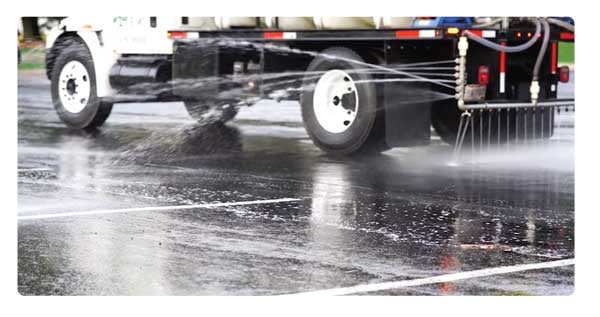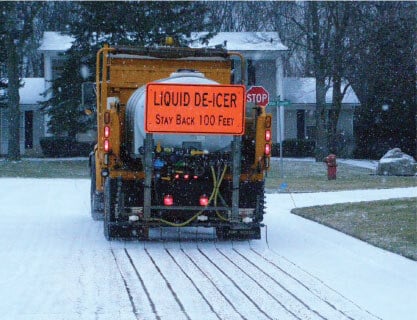Deicing liquids need space and infrastructure

When planning to store deicing liquids, the first factor to consider is your shop's capacity. The space available at your facility will directly impact how much liquid you can store and how efficiently you can manage it. It's essential to plan and make the right storage decisions early. Consider not just the physical space but also the logistics of accessing and maintaining the storage tanks. Ensure that the storage area is easy to access for filling and refilling, and also for any maintenance that might be required.
Additionally, take into account the infrastructure available at your shop. Do you have a large enough water supply line to support brine making? If your water supply is limited, you might need additional tanks with float valves to ensure a constant supply of water for your brine operations. Proper planning here can save you time and resources in the long run.
Ensuring multi-event flexibility with larger tanks
As your operations grow, so will your need for more storage capacity. Investing in larger tanks can provide significant advantages, especially when dealing with multi-event snow removal scenarios. A larger tank means you will not have to refill as often, allowing you to service long snow events or multiple back-to-back events more efficiently.
While a 250-gallon tote might suffice for smaller operations, looking ahead and investing in a 1,500-gallon tank can future-proof your setup. This approach not only offers flexibility but also ensures that you are not handcuffed by your storage capacity as your liquid deicing operations expand.
The importance of brine making and water supply
Brine making is a crucial component of liquid deicing, and having control over this process can significantly improve your operations. Producing your own brine allows you to control the quality and supply, ensuring that you always have the deicing materials you need when you need them. While the brine maker itself may not take up a large footprint, you will need adequate space for bulk salt storage and a reliable water supply.
If you have a robust water supply line, you can feed water directly into your brine maker. However, if your water supply is limited, investing in an additional tank with a float valve can keep your operation running smoothly. This setup allows you to have enough water on hand to avoid downtime waiting for the tank to fill.
Optimizing additives for temperature variability
Standard brine, a 23.3% solution of sodium chloride and water, loses its effectiveness at temperatures below 15°F. To enhance melting efficiency in colder weather, additives are often used. These additives help improve the melting capability of the brine, similar to how treated salt works.
When incorporating additives, it's essential to consider storage for these additional liquids. Keeping additives separate and mixing them as needed is generally the best approach. This strategy provides flexibility and can be more cost-effective since additives can be expensive. Plan for different scenarios by having separate storage tanks for various additives, allowing you to blend them in as required based on the specific weather conditions and temperatures.
Planning routes and application rates effectively
Effective route planning and application rates are vital for optimizing the use of deicing liquids. Establish routes based on lot sizes to estimate the number of trucks and the amount of material needed for each deicing round. Consider different scenarios, such as using 100% NaCl brine or a blend with additives, to determine the exact quantities required.
Application rates can vary depending on the expected weather conditions. For a typical snowstorm, applying liquids at 80 gallons per acre may suffice. However, for colder events where hard pack is anticipated, you might need to increase the application rate to 110 gallons per acre. Knowing the maximum amount of brine and additives needed per event helps in better calculating your storage needs and ensures efficient use of resources.
Benefits of jobsite storage for operational efficiency
As your operations grow, adding jobsite storage can significantly enhance efficiency. Having storage tanks at various jobsites allows for quick refilling of sprayers in the field, maximizing your routing efficiency. This setup reduces the need for trucks to return to the shop for refills, saving time and increasing the number of jobs you can handle in a single event.
Jobsite storage adds another layer of planning but offers considerable benefits in terms of operational efficiency. Strategically placed storage tanks can help ensure that your team is always prepared, reducing downtime and improving service quality for your clients.
By considering these factors you can effectively plan and manage the storage of deicing liquids, ensuring a smooth and efficient snow removal operation.
Josh Howver, ASM, is maintenance manager for Cornerstone Partners Horticultural Services in St. Charles, IL.





